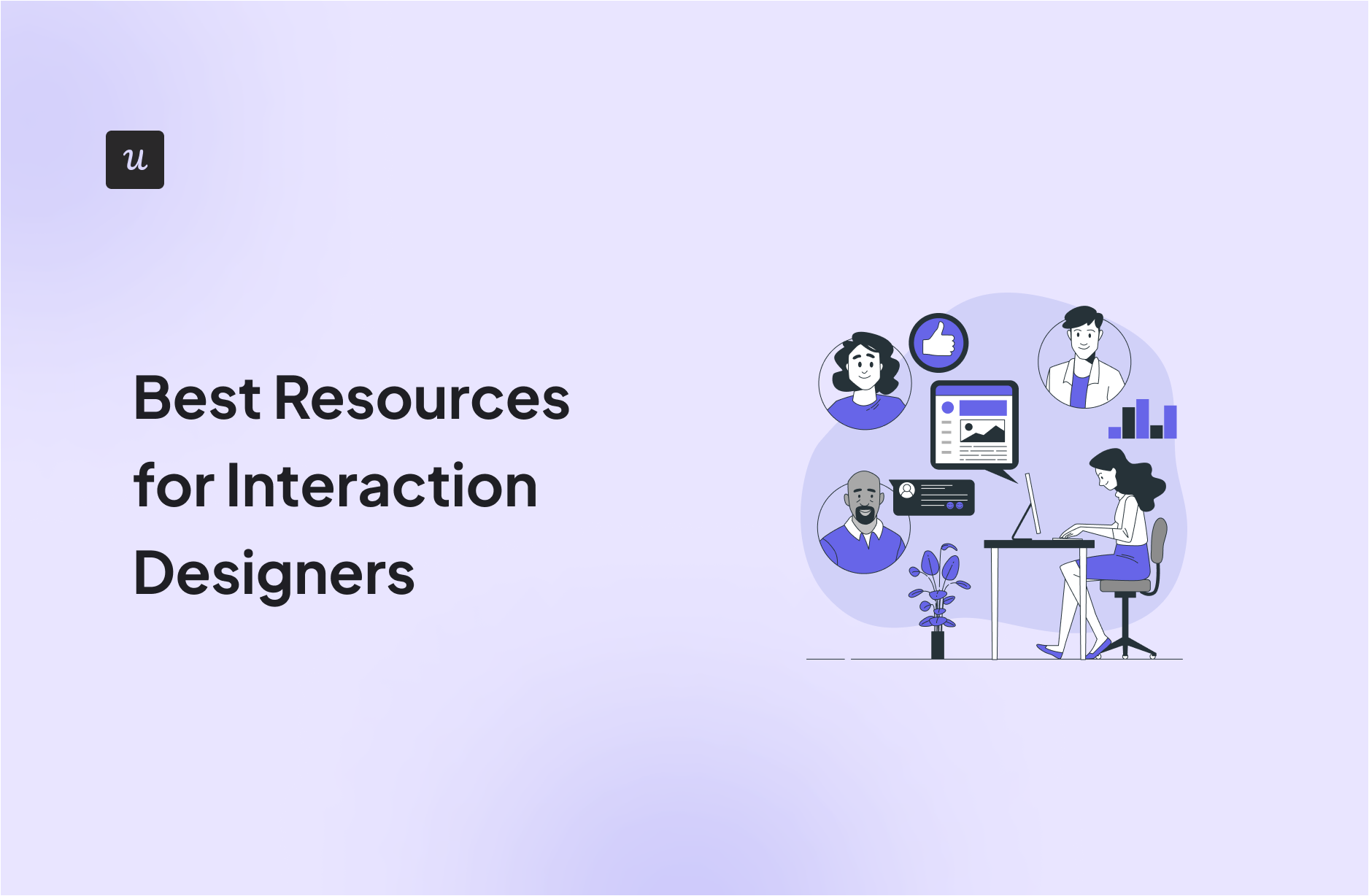
Helpful resources for interaction designers
To excel as an interaction designer, it’s essential to stay updated with the latest trends, techniques, and best practices. Here are some valuable resources, including books, webinars, podcasts, and blogs, that can help you enhance your skills and knowledge.
Best books for interaction designers
Here are the top books we recommend for interaction designers:
- Don’t Make Me Think by Steve Krug – This practical guide to web usability and user-centered design simplifies complex concepts and provides clear, actionable insights for creating intuitive digital experiences. It’s a must-read for anyone involved in web design and usability.
- The Design of Everyday Things by Don Norman – A classic in the field of design, this book explores the principles of human-centered design through everyday objects, offering timeless insights into creating products that are both functional and user-friendly.
- About Face: The Essentials of Interaction Design by Alan Cooper – This comprehensive guide covers interaction design principles and techniques, providing detailed methodologies for creating effective and engaging user interfaces.
- Lean UX by Jeff Gothelf and Josh Seiden – Integrating UX with Agile methodologies, this book offers practical advice on collaborative and iterative design processes, making it essential for teams working in fast-paced environments.
- Hooked: How to Build Habit-Forming Products by Nir Eyal – Offering insights into the psychology behind user engagement, this book provides a framework for creating products that encourage repeat use and form user habits.
Best webinars for interaction designers
If you’re an interaction designer, we recommend watching the below webinars:
- Userpilot webinars – Userpilot offers regular webinars focusing on user onboarding, product adoption, and UX design, providing actionable insights and strategies from industry experts.
- NN/g webinars – The Nielsen Norman Group’s webinars cover a variety of UX and interaction design topics, offering research-based insights and best practices from leading experts in the field.
- UXPA webinars – The UXPA hosts webinars that dive into UX best practices and emerging trends, helping designers stay up-to-date with the latest advancements in user experience.
- Interaction Design Foundation webinars – These webinars offer in-depth knowledge on a wide range of interaction design topics, presented by experts and accessible to both beginners and experienced professionals.
- Adobe XD webinars – Adobe offers webinars focusing on designing with Adobe XD and other Adobe tools, showcasing practical techniques and tips for creating high-quality user interfaces.
Best blogs for interaction designers
Here are the top blogs we recommend for interaction designers:
- Userpilot blog – The Userpilot blog offers articles on user onboarding, product adoption, and UX design, providing practical advice and insights to help designers create more engaging user experiences.
- Nielsen Norman Group blog – This blog features research-based articles on UX and interaction design, offering valuable insights and best practices from one of the leading authorities in the field.
- Smashing Magazine – A comprehensive resource on web design and development, Smashing Magazine includes articles on UX topics, practical tutorials, and industry trends, making it an essential reading for designers.
- UX Design.cc – Curated content on UX design, research, and strategy, this blog offers a wide range of articles that cover the latest trends, tools, and best practices in the UX field.
- A List Apart – Focused on web design, development, and user experience, A List Apart publishes in-depth articles that explore the intricacies of designing for the web, offering practical advice and innovative ideas.
Best podcasts for interaction designers
Here are the top podcasts we recommend for interaction designers:
- Userpilot Product Heros – This podcast discusses product adoption strategies and UX design, featuring practical tips for enhancing user engagement.
- The UX Podcast – Covering a wide range of UX and interaction design topics, this podcast offers insights from leading designers and thought leaders, making it a valuable resource for continuous learning.
- Design Matters – Hosted by Debbie Millman, this podcast features conversations with designers, artists, and creative thinkers about their craft, career paths, and personal stories, providing inspiration and practical advice.
- UI Breakfast – This podcast features interviews with industry experts on UI/UX design and product strategy, offering actionable insights and tips for improving design practices and product development.
- The NN/g UX podcast – Produced by Nielsen Norman Group, this podcast provides research-based insights and interviews with UX professionals, focusing on improving user experience and design processes.
Best certifications for interaction designers
While there’s no single “best” certification for interaction designers, several highly-regarded programs and courses can boost your skills and credibility. Here are a few options for you:
- Carnegie Mellon University – Master of Human-Computer Interaction (MHCI): This renowned program is a top choice for those seeking a graduate degree in interaction design.
- University of Washington – Master of Science in Human Centered Design & Engineering (HCDE): Another respected graduate program focusing on user-centered design and research.
- Nielsen Norman Group UX Certification: While focused on UX, this certification covers essential interaction design principles and is highly respected in the industry.
- Coursera – Interaction Design Specialization: This specialization by the University of California, San Diego, covers various topics like user research, prototyping, and evaluating interaction designs.
- Udemy – Interaction Design Courses: Udemy offers a wide range of affordable courses on specific interaction design topics, allowing you to customize your learning path.
Try Userpilot Now
See Why 1,000+ Teams Choose Userpilot

Best tools for interaction designers
To excel as an interaction designer, it’s essential to utilize the right tools that enhance your design process and improve user experiences. Here are 10 top tools that every interaction designer should consider:
- Best tool for user onboarding and feedback – Userpilot: Userpilot helps design and optimize user onboarding experiences and collect in-app user feedback to improve product engagement.
- Best tool for project management – Monday: Monday offers a highly visual and customizable platform for managing projects, tracking progress, and collaborating with team members efficiently.
- Best tool for team collaboration – Jira: Jira is a powerful tool for tracking tasks, managing agile workflows, and ensuring seamless collaboration among design and development teams.
- Best tool for documentation and knowledge sharing – Confluence: Confluence provides a centralized space for creating, organizing, and sharing project documentation, design guidelines, and collaborative notes.
- Best tool for customer support – Zendesk: Zendesk is a comprehensive customer service tool that enables interaction designers to understand user issues, gather feedback, and improve the user experience based on support data.
- Best tool for customer success management – ChurnZero: ChurnZero helps monitor customer health, engagement, and satisfaction, providing valuable insights for designing better user experiences.
- Best tool for UI/UX design – Figma: Figma offers real-time collaboration, vector editing, and prototyping capabilities, making it a versatile tool for creating and refining interactive designs.
- Best tool for vector graphics and interface design – Sketch: Sketch is a widely-used design tool known for its powerful vector graphics editing and prototyping features, ideal for creating detailed UI designs.
- Best tool for prototyping and animations – InVision Studio: InVision Studio provides robust prototyping and animation tools, allowing designers to create high-fidelity interactive prototypes and user interfaces.
- Best tool for data visualization and analytics – Tableau: Tableau is a leading data analytics tool that enables designers to visualize user data, derive insights, and make data-driven design decisions.
Conclusion
Professional growth is a continuous journey, and investing in your development is key to staying competitive in the field.
We hope this guide has equipped you with the tools and knowledge needed to excel in your role.
Looking into tools for interaction designers? Userpilot is an all-in-one product platform with engagement features and powerful analytics capabilities. Book a demo to see it in action!







